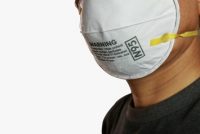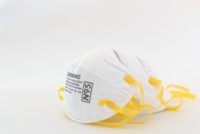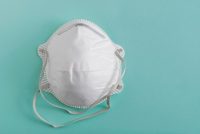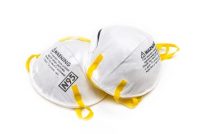No safety technology is changing as fast as that employed in PPE. The devices of just a few years ago are now obsolete by replacements that are lighter, easier to use, and more protective. These resources alert you to developments in the field, and equally important, supply training ideas to get your workers to use their PPE, and use it correctly.
Free Special Report: Does Your PPE Program Meet OSHA’s Requirements?
Why are there still shortages of N95 filtering facepiece respirators (FFRs)? Basically, when the coronavirus disease 2019 (COVID-19) pandemic was declared in March, a spike in demand for N95 respirators met a “just-in-time” supply chain. Both industry and government have moved to address shortages. COVID-19 is a respiratory disease caused by an infection of the […]
It takes clear, regular communication to drive the employee engagement required to build and maintain an effective safety culture at any organization. This is especially true as we continue to adjust to the “new normal” during the COVID-19 pandemic, with organizations of all shapes and sizes operating on a wide spectrum of models, from having […]
Even before a great many of us were working remotely, connectivity has been and will always be a key component of successful safety programs and healthy safety cultures. Open communication, engagement from employees and management, and effective change management all depend on connectivity, and technology can help facilitate all of these factors on which effective […]
On August 6, the California Division of Occupational Safety and Health (Cal/OSHA) released updated guidance for healthcare employers facing severe shortages of respirators during the ongoing coronavirus disease 2019 (COVID-19) pandemic. The supply chain for respirators has improved but is not yet fully restored, according to Cal/OSHA.
Since the COVID-19 pandemic started, employers have struggled to understand the Occupational Safety and Health Administration’s (OSHA) position on cloth face coverings and surgical masks, specifically whether the agency requires or recommends their use and whether they constitute personal protective equipment (PPE).
Exceptions from respiratory protection regulations allowing the use of surgical masks only apply to healthcare facilities and emergency medical services, the Occupational Safety and Health Administration (OSHA) reminded employers. Other employers must provide respirators, the agency explained in guidance discussing the differences among cloth face coverings, surgical masks, and respirators.
Non-National Institute for Occupational Safety and Health (NIOSH)-approved filtering facepiece respirators (FFRs) made in China are no longer authorized for decontamination, the Food and Drug Administration (FDA) announced on June 6.
On May 11, the Occupational Safety and Health Administration (OSHA) issued an alert for dental practitioners during the COVID-19 pandemic. OSHA alerted employers and workers to increased risk of occupational exposures to the SARS-CoV-2 virus.
The Centers for Disease Control and Prevention (CDC) and Occupational Safety and Health Administration (OSHA) published guidance for employers reopening their businesses as states lift stay-at-home orders issued this spring in response to the COVID-19 pandemic.
The Occupational Safety and Health Administration (OSHA) issued enforcement guidance allowing the decontamination and reuse of N95 respirators during the COVID-19 pandemic on a case-by-case basis. The interim guidance to the agency’s Compliance Safety and Health Officers (CSHOs) allows the reuse, in certain circumstances, of filtering facepiece respirators (FFRs) decontaminated using methods that have shown […]










